
SUNY Optometry researchers demonstrate that cortical maps for eye dominance are very diverse because the amount of cortex available to represent each binocular point varies greatly across species. Their findings were originally published in The Journal of Neuroscience. The work was done by Sohrab Najafian in the laboratory of Jose Manuel Alonso at the State University of New York College of Optometry.
The human visual brain devotes most of its neuronal resources to process the part of the visual scene that we see with both eyes. To achieve this goal, afferents from the two eyes representing the same binocular point in visual space become close neighbors in the primary visual cortex, the first cortical recipient of visual input. In turn, the primary visual cortex carefully allocates its neuronal resources to represent stimuli within each binocular point as efficiently as possible.
The primary visual cortex of different species achieves this goal using different strategies. In humans and macaques, the cortex splits the map of visual space in intercalated pairs of stripes for the left and right eyes forming a Zebra pattern. In carnivores, the cortex splits the map in blobs forming a Dalmatian pattern. In rodents and lagomorphs, the afferents from the two eyes mix and do not form any specific pattern. For decades, the origin of these diverse ocular cortical patterns remained a controversial puzzle.
In a recent study that will be published in the Journal of Neuroscience on November 14, 2019, researchers found evidence that ocular dominance patterns are diverse because the amount of cortex available to represent each binocular point varies greatly across species and individual animals of the same species.
In humans, the primary visual cortex devotes large cortical rectangles to represent each binocular point, allowing the afferents from the two eyes to form stripes running parallel along the shortest axis of the rectangle. However, in cats, the cortex devotes smaller cortical squares to represent each binocular point and the afferents are constrained to form blob patterns. Finally, in mice, the cortex is too small and the few afferents representing the same binocular point mix and form no specific pattern.
The researchers also found that, when cortical resources decrease to represent points that are increasingly farther from the point of visual fixation, the half eye that is closest to the nose (nasal retina) dominates and gains access to more cortical space than the other half eye (temporal retina). Therefore, just as the right hand dominates motor processing in right-handed humans, the nasal retina dominates visual processing and this dominance increases with the distance from the point of fixation.
Taken together, these results support the notion that the primary visual cortex optimizes its neuronal resources to encode as efficiently as possible the different stimulus combinations available at each binocular point of visual space. The work was done by Sohrab Najafian in the laboratory of Jose Manuel Alonso at the State University of New York College of Optometry.


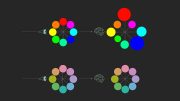
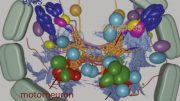
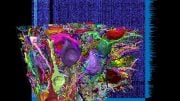
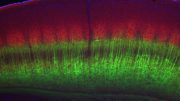


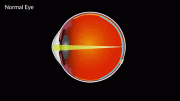
Please take me off your notification list. You should have an icon where one can un-list oneself.